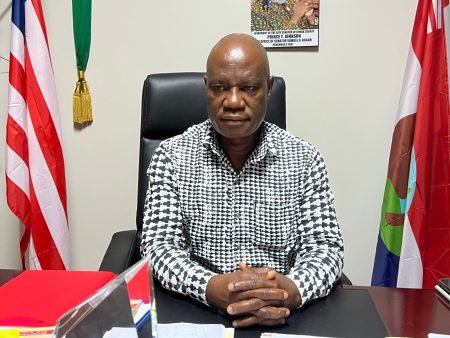The intricate web of a cross-border kidnapping syndicate, exploiting the vulnerabilities of individuals seeking connection through social media, was unravelled in a collaborative effort between the Nigerian and Ghanaian police forces. This operation led to the rescue of two Ghanaian women and the apprehension of three suspects involved in the elaborate scheme. The narrative began with a seemingly innocuous Facebook connection, a virtual romance that masked a sinister plot. Anastasia Arthur, a 48-year-old Ghanaian woman known as Baidoo, became entangled in this deceptive online relationship, unaware that she was being lured into a trap. The perpetrators, operating across international borders, meticulously crafted their scheme, preying on her trust and vulnerability. What began as a virtual courtship quickly spiralled into a real-life nightmare when Arthur was abducted, ripped from her familiar surroundings and plunged into the terrifying world of captivity.
The alarm was raised on April 27, 2025, when a report of Arthur’s kidnapping was filed with the National Central Bureau in Abuja, Nigeria. This triggered a swift and determined response from the Intelligence Response Team (IRT) of the Nigeria Police Force. Leveraging advanced technical analysis and working in close coordination with the Ghanaian Police Service, the IRT operatives embarked on a mission to unravel the complex web of the criminal syndicate. Their investigations soon revealed the transnational nature of the operation, with members based in both Ghana and Nigeria, working in concert to execute their nefarious plan. The digital breadcrumbs left behind by the perpetrators led the investigators to a crucial location connected to the kidnappers.
The breakthrough came with the arrest of Emeka Christian, a 27-year-old Nigerian resident of Bolgatanga, in Upper Eastern Ghana. Christian’s confession provided crucial insights into the financial transactions involved in the kidnapping. He admitted to receiving GH¢10,000 (Ghanaian Cedis) as ransom payment for Arthur’s release. This money, he revealed, was then converted into Nigerian Naira and transferred to a Nigerian bank account belonging to an individual named Peter Okoye. This financial trail became a critical piece of the puzzle, leading investigators closer to the heart of the operation.
With Okoye’s identity revealed, the IRT operatives intensified their efforts, tracing his location to Port Harcourt, Rivers State, Nigeria. In a carefully executed operation, Okoye was apprehended along with two other members of his syndicate, Paulinus Chidokwe and Chinonso Okafor, both 35 years old. The raid on their hideout yielded the most precious discovery: Anastasia Arthur and another Ghanaian woman, Amaseerwaa Konadu, who had also fallen victim to the syndicate’s machinations, were found held captive. Both women were discovered in deplorable conditions, bearing the physical and emotional scars of their ordeal. They were immediately transported to a hospital for medical treatment and psychological support.
The rescue of the two women marked a significant victory in the fight against transnational crime. It highlighted the crucial role of international collaboration in tackling complex criminal networks that operate across borders. The case underscores the dangers lurking in the digital landscape, where seemingly harmless online interactions can mask sinister intentions. The sophisticated nature of the scam, involving a carefully orchestrated romance scam, highlights the need for increased awareness and vigilance in the online world.
This operation serves as a potent reminder of the importance of vigilance and caution when engaging in online relationships. While the internet offers opportunities for connection and communication, it also provides a platform for those with malicious intent to exploit vulnerabilities. The successful rescue of the two Ghanaian women and the arrest of the perpetrators underscore the effectiveness of collaborative law enforcement efforts across international borders. This case serves as a testament to the power of cooperation in dismantling criminal networks and bringing perpetrators to justice. The investigation continues, with authorities working to uncover the full extent of the syndicate’s operations and identify any other potential victims.














